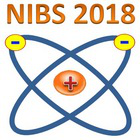Speaker
Mr
Riccardo Agnello
(Ecole Polytechnique Federale de Lausanne)
Description
The Neutral Beam Injector (NBI) system for DEMO is designed to deliver a beam with energy 800 keV, accelerated current 34 A, and will require a neutralization efficiency for negative ions larger than 70\% [1]. Research groups in France and Switzerland are developing a new source concept for DEMO NBI based on a magnetized plasma column produced by a helicon antenna [2]. In RAID (Resonant Antenna Ion Device) at the Swiss Plasma Center, the physics of volume-produced negative ions and helicon plasmas is investigated. RAID is a linear device producing steady state plasma discharges with different gases, including $H_2$ and $D_2$, by means of a resonant helicon antenna with RF power up to 10 kW [3-4]. Previous optical emission spectroscopy (OES) data reveal a significant volume production of $H^-$ and $D^-$ and a favorable scaling law with power [5]. To confirm the previous results with a totally independent technique for detecting negative ions, Cavity Ring-Down Spectroscopy (CRDS) was recently installed. We present first CRDS measurements which provide values in agreement with OES, confirming that negative ions are produced in the RAID plasma column with significant densities.
RAID is also devoted to the study of helicon wave physics and, in particular, of the mechanisms that lead to the production of a steady state plasma discharge. Many physics issues on helicon plasma sources are still open regarding, for instance, how the power is deposited in the plasma. We present three-dimensional plasma density and temperature profiles measured by means of a two-axis Langmuir probe and calibrated with a 100 GHz microwave interferometer. These reveal the production of a radially peaked density and temperature plasma column with good homogeneity in the axial direction for up to one meter. This last property could be favorable for the homogeneity of negative ion production. Moreover, magnetic probe measurements are used to reconstruct the propagation of helicon waves for comparison with COMSOL simulations, with the aim of linking together different plasma regimes and negative ion production.
[1] P. Sonato et al. “Conceptual design of the beam source for the DEMO Neutral Beam Injectors” New J. Phys. (2016) 18 125002
[2] A. Simonin et al. “Negative ion source development for a photoneutralization based neutral beam system for future fusion reactors” New J. Phys. 18 (2016) 125005
[3] Ph. Guittienne et al. “Towards an optimal antenna for helicon excitation”, J. Appl. Phys. 98, 083304 (2005)
[4] I. Furno et al. “Helicon wave-generated plasmas for negative ion beams for fusion”, EPJ Web of Conferences 157, 03014 (2017)
[5] C. Marini et al. “Spectroscopic characterization of H_2 and D_2 helicon plasmas generated by a resonant antenna for neutral beam application in fusion”, Nucl. Fusion 57 (2017) 036024
Primary author
Mr
Riccardo Agnello
(Ecole Polytechnique Federale de Lausanne)
Co-authors
Dr
Alain Simonin
(IRFM, France)
Dr
Alan Howling
(Ecole Polytechnique Federale de Lausanne)
Dr
Gennady Pluyschev
(Ecole Polytechnique Federale de Lausanne)
Mr
Iaroslav Morgal
(IRFM, France)
Prof.
Ivo Furno
(Ecole Polytechnique Federale de Lausanne)
Dr
Marco Barbisan
(Consorzio RFX)
Dr
Philippe Guittienne
(Ecole Polytechnique Federale de Lausanne)
Mr
Remy Jaquier
(Ecole Polytechnique Federale de Lausanne)
Dr
Roberto Pasqualotto
(Consorzio RFX)
Dr
Stephane Bechu
(LPSC, Universite Grenoble-Alpes)

